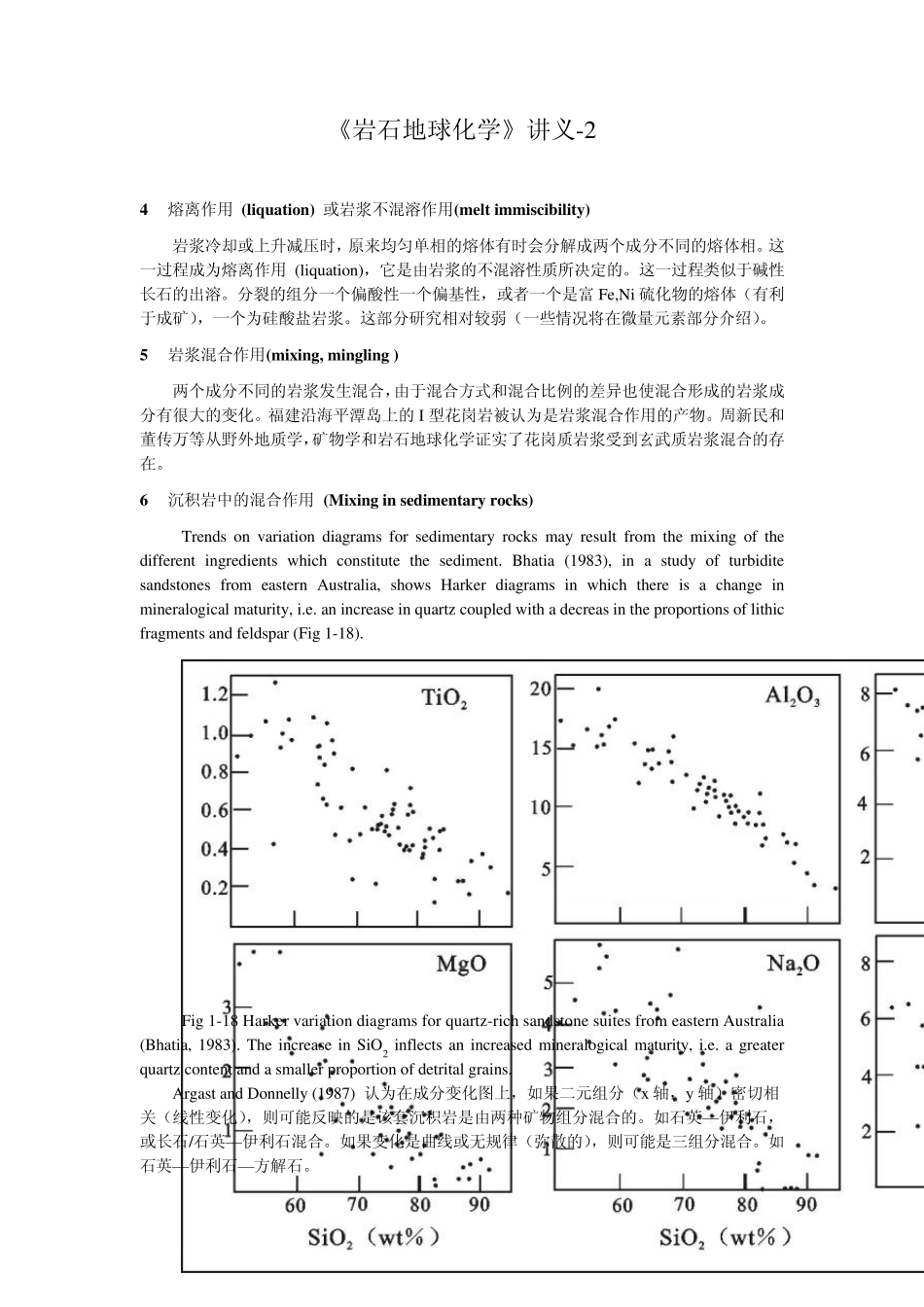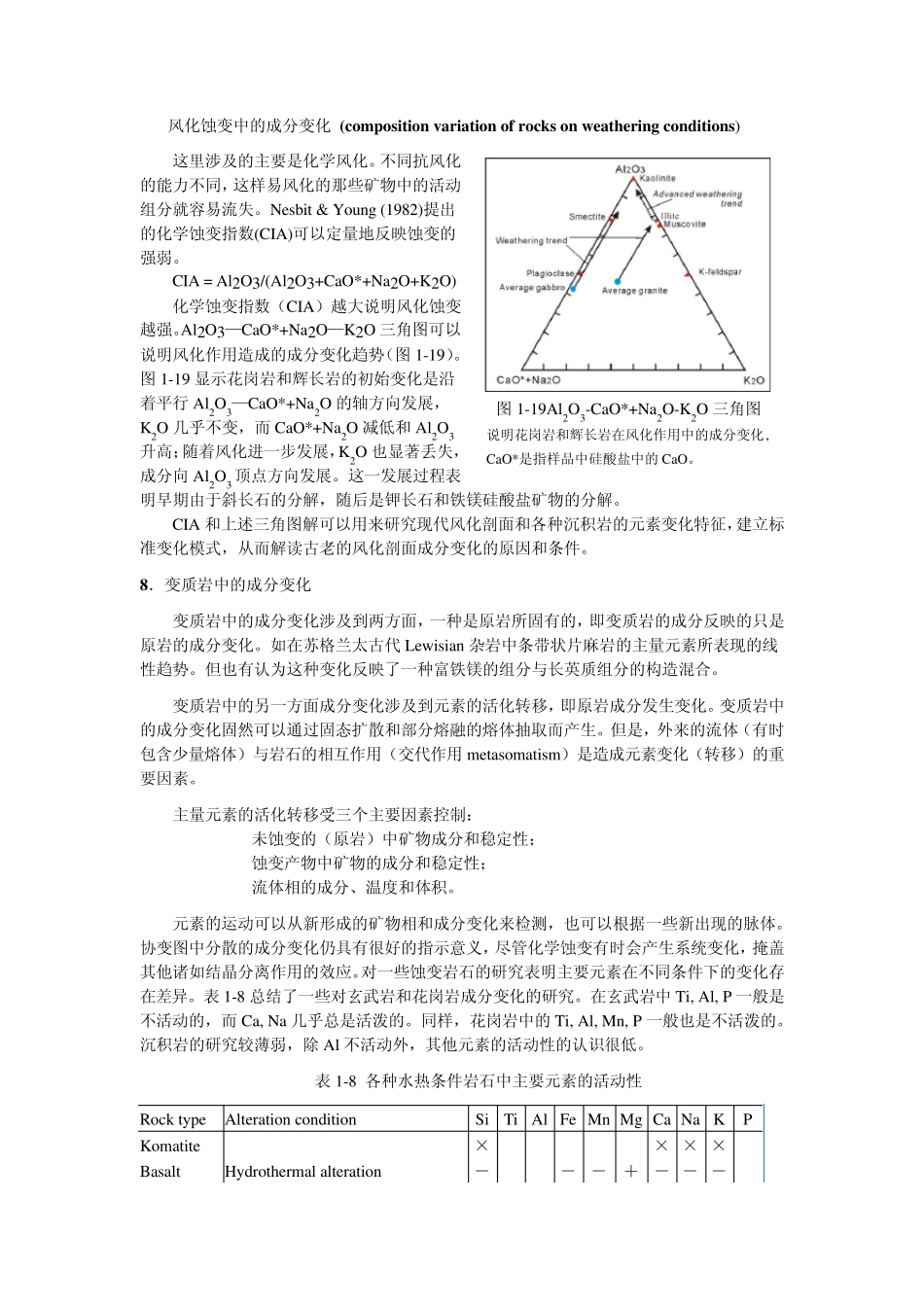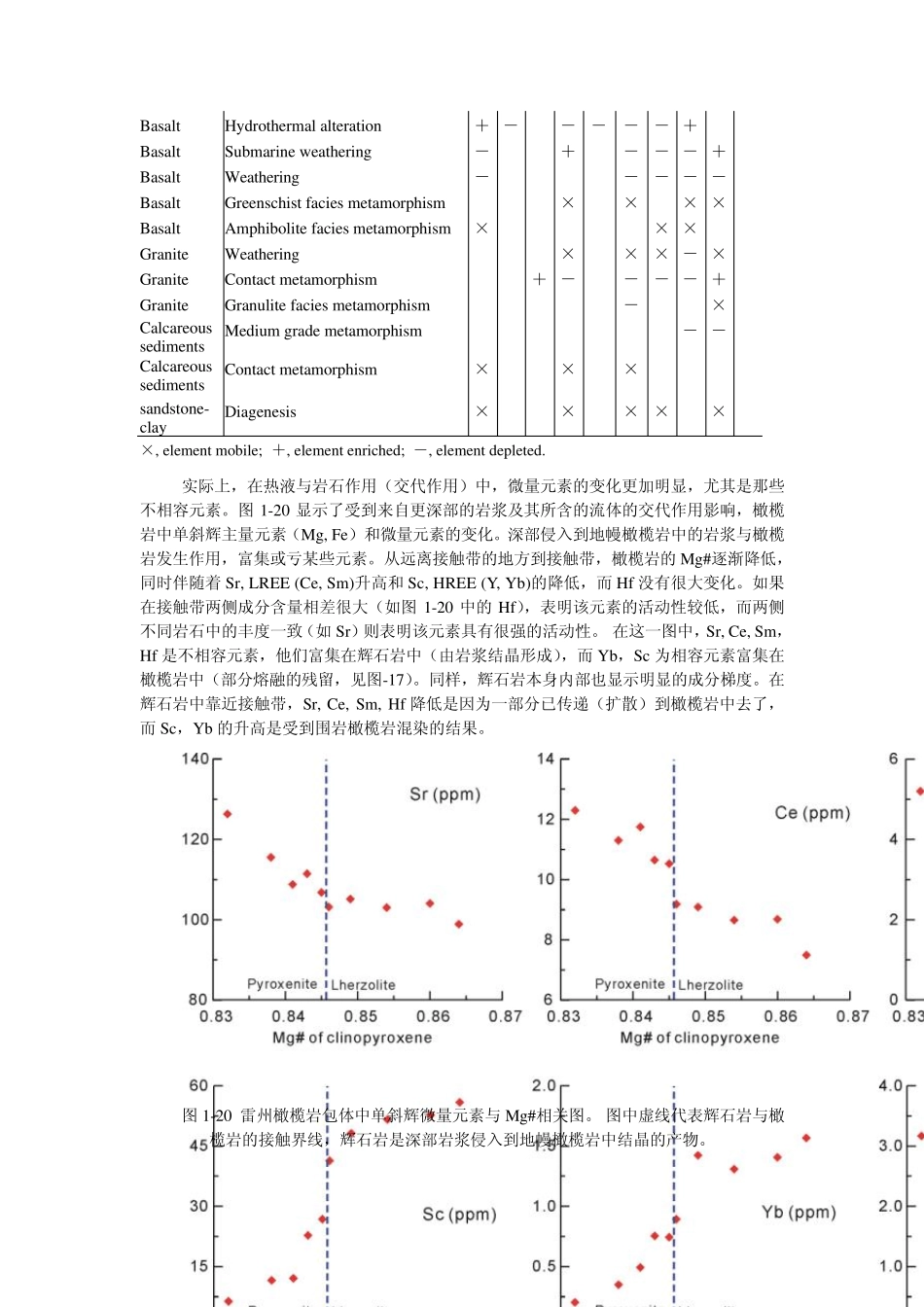《岩石地球化学》讲义-2 4 熔离作用 (liquation) 或岩浆不混溶作用(melt immiscibility) 岩浆冷却或上升减压时,原来均匀单相的熔体有时会分解成两个成分不同的熔体相。这一过程成为熔离作用 (liquation),它是由岩浆的不混溶性质所决定的。这一过程类似于碱性长石的出溶。分裂的组分一个偏酸性一个偏基性,或者一个是富 Fe,Ni 硫化物的熔体(有利于成矿),一个为硅酸盐岩浆。这部分研究相对较弱(一些情况将在微量元素部分介绍)。 5 岩浆混合作用(mixing, mingling ) 两个成分不同的岩浆发生混合,由于混合方式和混合比例的差异也使混合形成的岩浆成分有很大的变化。福建沿海平潭岛上的I 型花岗岩被认为是岩浆混合作用的产物。周新民和董传万等从野外地质学,矿物学和岩石地球化学证实了花岗质岩浆受到玄武质岩浆混合的存在。 6 沉积岩中的混合作用 (Mixing in sedimentary rocks) Trends on variation diagrams for sedimentary rocks may result from the mixing of the different ingredients which constitute the sediment. Bhatia (1983), in a study of turbidite sandstones from eastern Australia, shows Harker diagrams in which there is a change in mineralogical maturity, i.e. an increase in quartz coupled with a decreas in the proportions of lithic fragments and feldspar (Fig 1-18). Fig 1-18 Harker variation diagrams for quartz-rich sandstone suites from eastern Australia (Bhatia, 1983). The increase in SiO2 inflects an increased mineralogical maturity, i.e. a greater quartz content and a smaller proportion of detrital grains. Argast and Donnelly (1987) 认为在成分变化图上,如果二元组分(x 轴,y 轴)密切相关(线性变化),则可能反映的是该套沉积岩是由两种矿物组分混合的。如石英—伊利石,或长石/石英—伊利石混合。如果变化是曲线或无规律(弥散的),则可能是三组分混合。如石英—伊利石—方解石。 7 风化蚀变中的成分变化 (composition variation of rocks on w eathering conditions) 这里涉及的主要是化学风化。不同抗风化的能力不同,这样易风化的那些矿物中的活动组分就容易流失。Nesbit & Young (1982)提出的化学蚀变指数(C...


